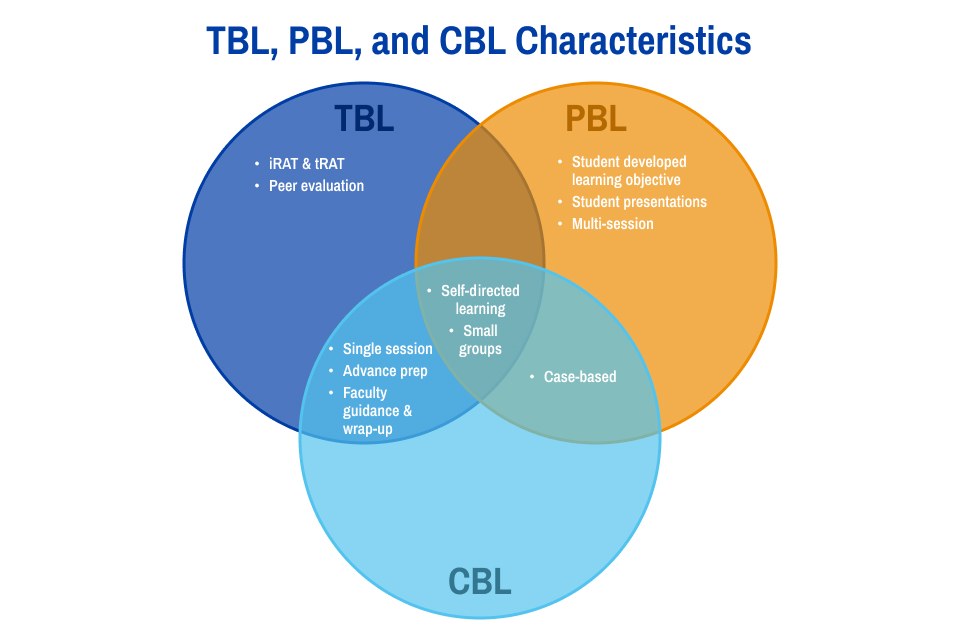Active Learning in the Pre-Clinical Environment
Have you ever given a lecture to a group of adult learners? If so, you may have noticed their eyes losing focus and phones appearing as you moved through your session. This is because the traditional lecture format lacks engagement and has limited effectiveness compared to active learning strategies.
Educators who move away from the traditional lecture format and embrace evidence-based active learning practices effectively engage learners and drive deeper learning. Such an educator, serving as facilitator, in the learning space can strongly impact student attention and learning.
Active learning is a concept that has gained increasing importance in medical education. It describes a variety of approaches meant to further engage students in learning and can improve learning outcomes through teaching techniques such as case-based learning, project-based learning, and simulations. Active learning strategies promote retention and application of new knowledge compared to the passive provision of information via lecture. These activities can be incorporated into or replace traditional lectures. Many of these activities take advantage of the concept of “flipped classrooms.” These combine out-of-classroom learning activities with in-person active learning activities. The use of the flipped classroom model has been shown to improve performance on summative assessments.
One of the biggest barriers to the implementation of active learning in the pre-clinical environment lies in transforming traditional lecture material into engaging activities and ensuring faculty preparation. Embracing active learning may also necessitate a shift in individual faculty mindset, efforts to encourage student buy-in, and intentional institutional culture change. Below are some example strategies for active learning, some of which are implemented at Saint Louis University School of Medicine and some of which are described in literature. These techniques, along with the others that fall under the umbrella of active learning, can be integrated in the best way to amplify learning material.
Types of Active Learning Techniques
Team, Case, and Problem-Based Learning: Team-based learning (TBL), Case-based learning (CBL), and Problem-based learning (PBL) are all structured small-group learning activities that allow students to work through problems or cases. All three share similarities, with differences in set-up and implementation. At their core, these methods utilize a vignette, case, or problem that students work together to solve. These activities can include pre-work and pre-tests, as in the case of TBLs. During activities, students can utilize resources such as primary literature and databases in an example of self-directed learning. This type of active learning can be particularly beneficial as it can model the processes used in the clinical environment. There are similarities and differences in the characteristics of TBL, PBL, and CBL, as illustrated below.
 Peer-assisted learning: Peer-assisted learning describes activities where students in the same class assist each other in learning
activities. This can encompass a great variety of different activities, including
discussions and projects. At Saint Louis University School of Medicine, we incorporate
peer-assisted learning into sessions called “Peer Instruction.” During these sessions, faculty present problems as multiple-choice questions with
a single best answer. While in groups, students first answer questions individually.
After the class has submitted their initial responses, the faculty determine if the
students have answered correctly to a certain threshold. If students do not meet the
threshold, they are encouraged to discuss the question in groups until the threshold
is met. Then, a student is selected by the faculty to explain their answer choice
and reasoning. Students are then guided by the faculty member in a large group through
the thought process and reasoning for the question. This supports active learning
through individual assessment of learning and formative feedback.
Peer-assisted learning: Peer-assisted learning describes activities where students in the same class assist each other in learning
activities. This can encompass a great variety of different activities, including
discussions and projects. At Saint Louis University School of Medicine, we incorporate
peer-assisted learning into sessions called “Peer Instruction.” During these sessions, faculty present problems as multiple-choice questions with
a single best answer. While in groups, students first answer questions individually.
After the class has submitted their initial responses, the faculty determine if the
students have answered correctly to a certain threshold. If students do not meet the
threshold, they are encouraged to discuss the question in groups until the threshold
is met. Then, a student is selected by the faculty to explain their answer choice
and reasoning. Students are then guided by the faculty member in a large group through
the thought process and reasoning for the question. This supports active learning
through individual assessment of learning and formative feedback.
Simulation: Incorporation of simulations into pre-clinical education can greatly break up the monotony of lecture-based learning. These activities can provide the opportunity for direct skill building and learning in a low-risk environment. There are, however, barriers to simulation-based learning. Primarily, these include faculty and staff time. For effective simulations, sessions should be held with a smaller number of students which necessitates a large amount of faculty time to facilitate such sessions. While cost can also be a barrier, some simulations can be administered without the need for high-cost materials. For instance, modeling and providing space to practice difficult conversations such as vaccine hesitancy and code status discussions can be useful for students prior to entering into clinical training.
Application of Active Learning
Active learning in the pre-clinical environment has been implemented in a variety of ways. Medical student populations are typically heterogeneous with students of different backgrounds, ages, and bases of knowledge. As such, it is vital for educators to continuously seek feedback from students and identify opportunities for improvement specific to their course and institution. In addition, faculty should choose active learning techniques that suit the material that they are trying to impart to students. There are many advantages and disadvantages to the different active learning techniques that can be leveraged appropriately.
Overall, active learning is beneficial for both students and educators as it enhances understanding and participation in the learning environment. While creation of these sessions requires increased upfront effort from the educator, integrating active learning components into traditional lectures or replacing them altogether offers trainees more opportunities for effortful and effective learning. Studies that examine the effectiveness of active learning in medical students show active learning significantly improves performance, although improvements are dependent on learner engagement. As such, creating successful active learning sessions requires input from both the educator and learner for optimal results but can be beneficial for educators and learners.
 Kirti Veeramachaneni, is a current medical student (Class of 2026) at Saint Louis
University School of Medicine. Kirti’s areas of professional interest include assessment
and evaluation of clinical learners, medical humanities, and interprofessional education.
Kirti can be found on LinkedIn or contacted via email Kirti.
Kirti Veeramachaneni, is a current medical student (Class of 2026) at Saint Louis
University School of Medicine. Kirti’s areas of professional interest include assessment
and evaluation of clinical learners, medical humanities, and interprofessional education.
Kirti can be found on LinkedIn or contacted via email Kirti.